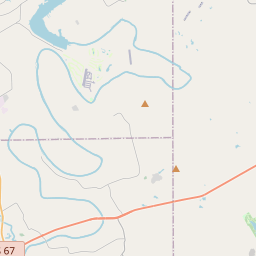Pioneer Texas Telephones
Historical marker location:






The first telephones in Texas, in 1878, connected the "Galveston News" with the home of its publisher, Col. A. H. Belo. Galveston also had the first exchange, 1879, and first long-distance line, which ran to Houston, in 1883. Cleburne phone service began 1882 when Automatic Telephone Company opened. In 1897 Southwestern Telegraph and Telephone Company (which later joined Bell System) started another firm. It built city's first long distance line, 12 miles to Alvarado junction. Monthly rates were $2 to $3. About 1904, the Automatic Telephone Company installed some of first dial phones in U.S.- fifteen years before they were used successfully elsewhere. But in 1912, problems forced the Automatic Telephone Company to close. Near turn of century, rural areas often used barbed wire fences for phone lines. Even urban homes shared party lines, each one having its special "ring". Circuits joined a main switchboard manned by one operator "central"--- the hub of local news. "Central" always knew where to find town doctor and was a clearing house for funeral plans. The unemployed could ask her who needed workers; she advertised by ringing all phones to read announcements. Many small towns regretted losing her services when dial phones came into use. By 1966, Texas had 4,474,722 telephones, 134 companies.
Incise in base:
Early travel, transportation and communication series erected by the Moody Foundation
As one of the most visible programs of the Texas Historical Commission (THC), historical markers commemorate diverse topics in Texas history, including: the history and architecture of houses, commercial and public buildings, religious congregations, and military sites; events that changed the course of local and state history; and individuals who have made lasting contributions to the state, community organizations, and businesses.
In the late 19th century, Texas became known for its cattle drives, in which cowboys would move herds of cattle from Texas to railheads in Kansas and other northern states. The cattle drives were dangerous and difficult work, but they played a key role in the development of the American cattle industry.
The establishment of Johnson County can be traced back to 1854 when it was officially organized and named after Middleton Tate Johnson, a Texas Ranger and a Confederate commander during the Civil War. The county quickly began to grow, attracting settlers from nearby areas due to its abundant natural resources and favorable climate for agriculture. Cotton and corn became the primary crops, and the county's economy thrived, aided by the construction of railroads in the late 1800s.
Throughout its history, Johnson County has faced both triumphs and challenges. In the late 1800s, the county was known for its fertile soil and large cotton plantations, which contributed to its economic prosperity. However, like many areas in the South, Johnson County also experienced the hardships of Reconstruction following the Civil War. Additionally, the destructive effects of the Great Depression in the 1930s had a significant impact on the local economy, causing widespread poverty and unemployment.
In recent decades, Johnson County has seen significant growth and development. With an expanding population and a diverse economy, the county has become a hub for industry, commerce, and residential communities. Today, it continues to embrace its rich cultural heritage while adapting to the changing needs of its residents. Johnson County's historical legacy serves as a reminder of the resilience and determination of its people, allowing the county to thrive and face the future with confidence.
Johnson County Timeline
This timeline provides a concise overview of the key events in the history of Johnson County, Texas.
- 1846: Johnson County is established as a county in the state of Texas.
- 1861-1865: Johnson County sends soldiers to fight in the American Civil War.
- 1867: The county experiences economic growth as the Chisholm Trail passes through, bringing cattle drives and trade.
- 1879: The town of Cleburne is established as the county seat.
- 1880s: The arrival of the railroad boosts the local economy and facilitates transportation.
- 1893: The Johnson County Courthouse is constructed in Cleburne, becoming a local landmark.
- 1920s: The county suffers from the Great Depression, causing economic hardships for its residents.
- 1940s: Johnson County contributes to the war effort during World War II, with many residents serving in the military.
- 1950s-1960s: The county experiences population growth and suburbanization.
- 1990s: The opening of the Chisholm Trail Parkway provides improved transportation and connectivity.